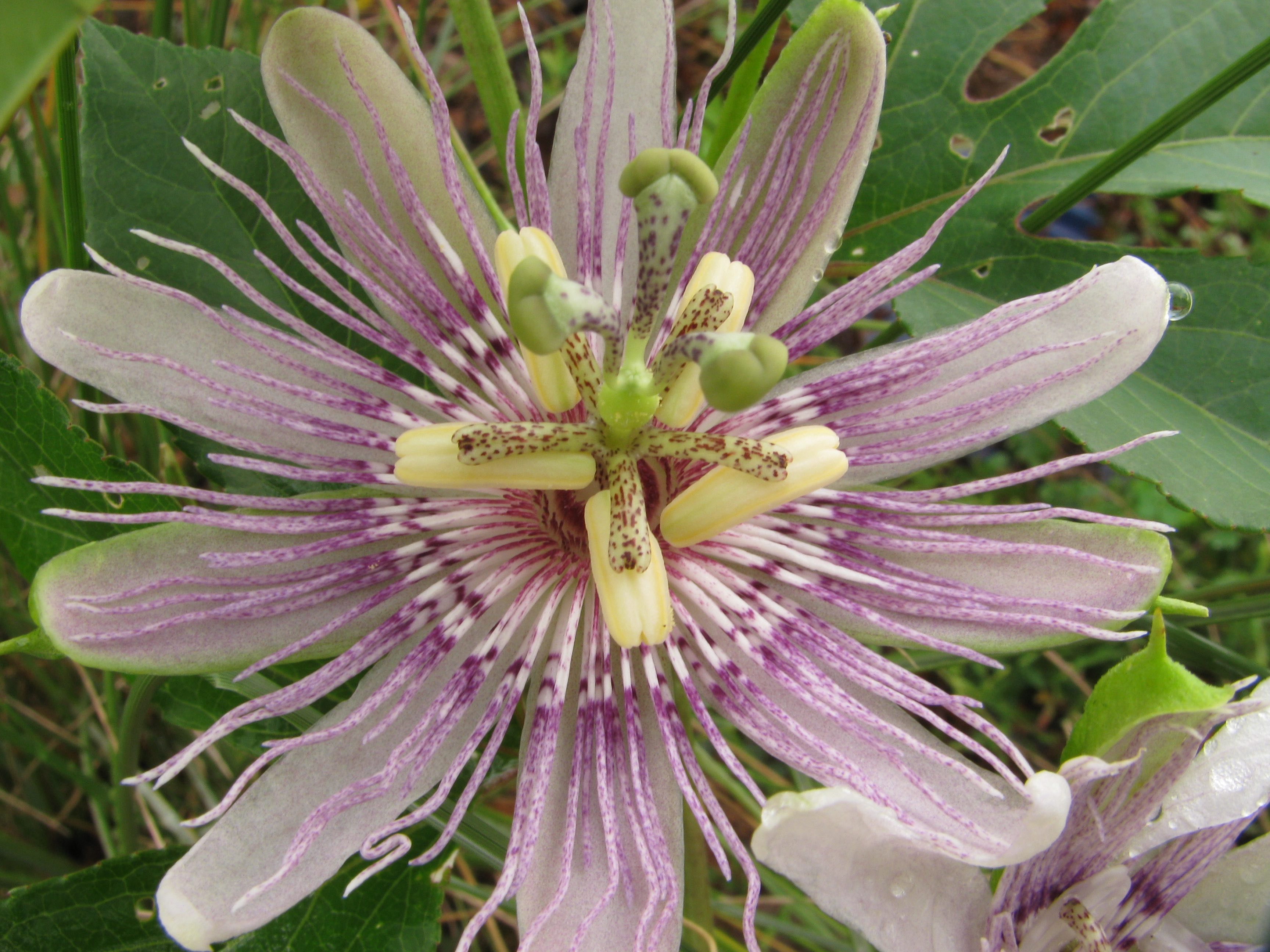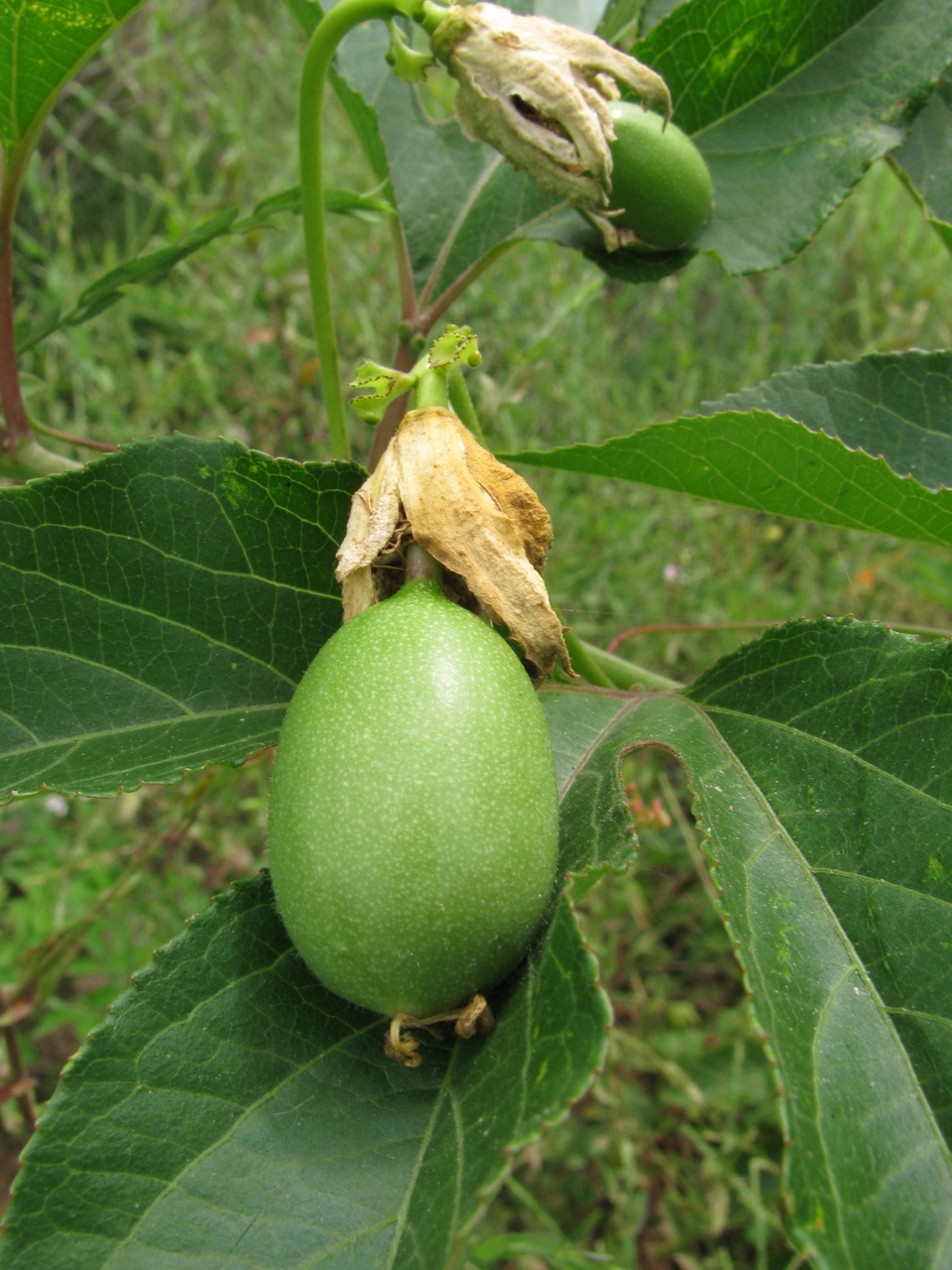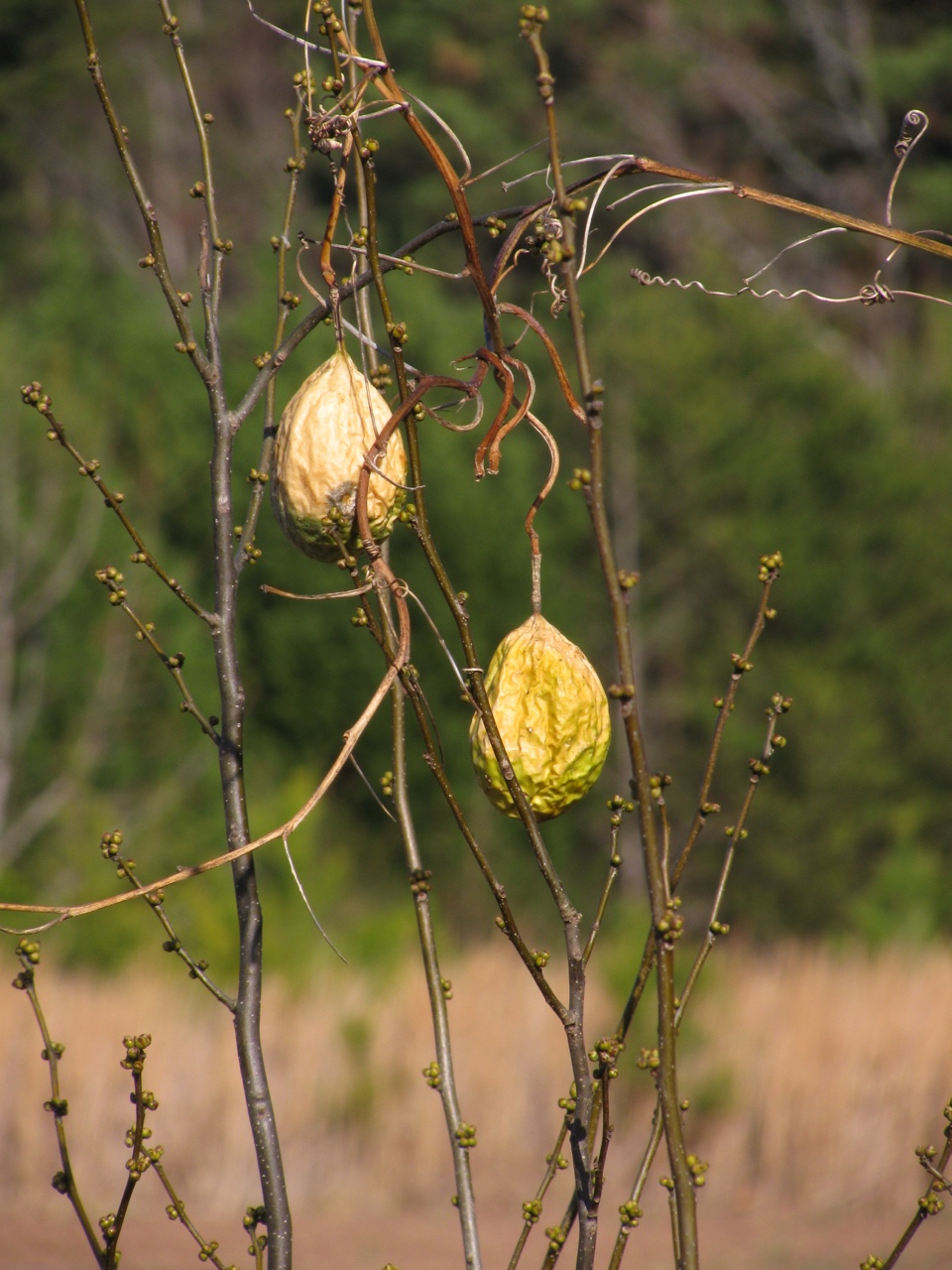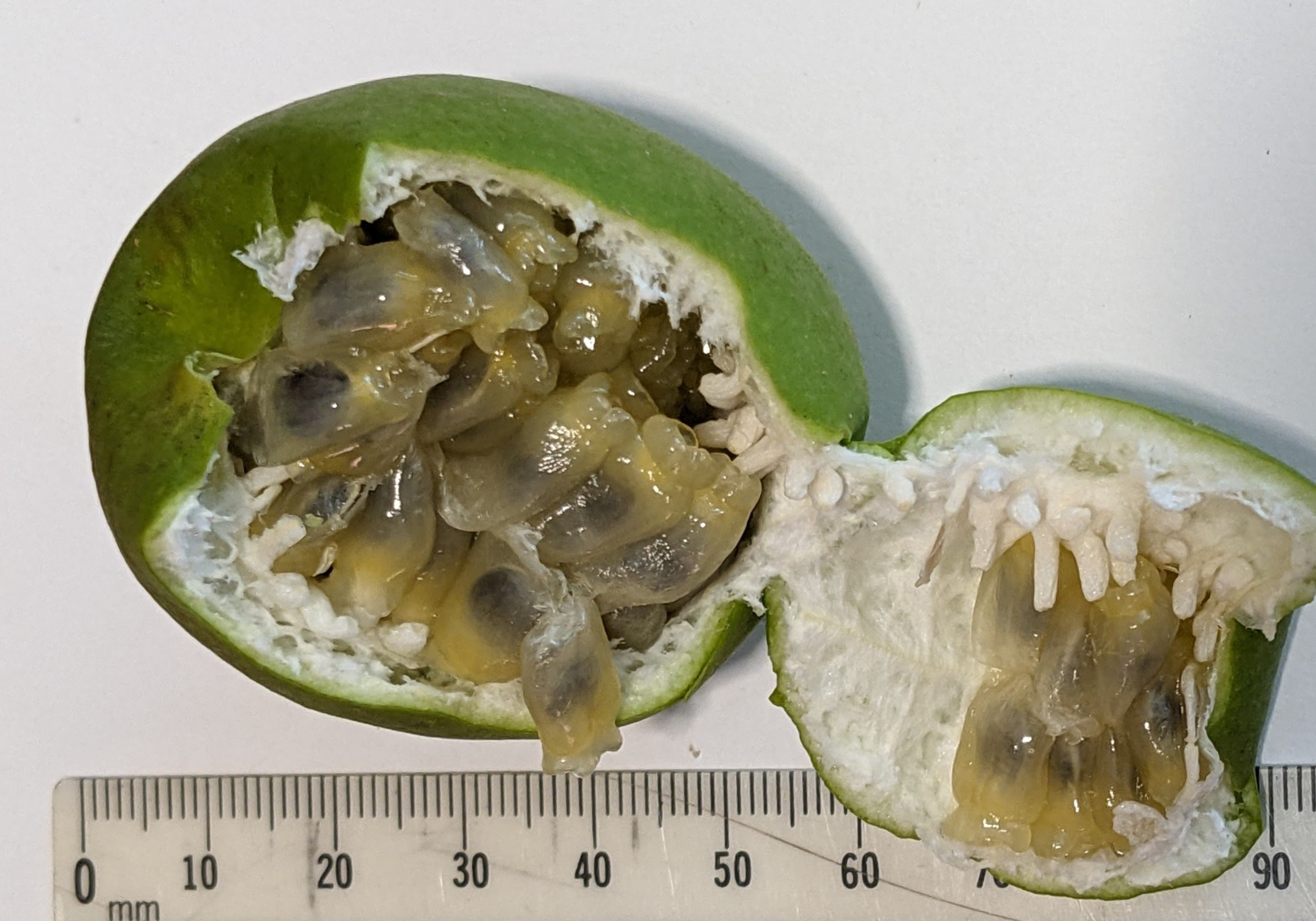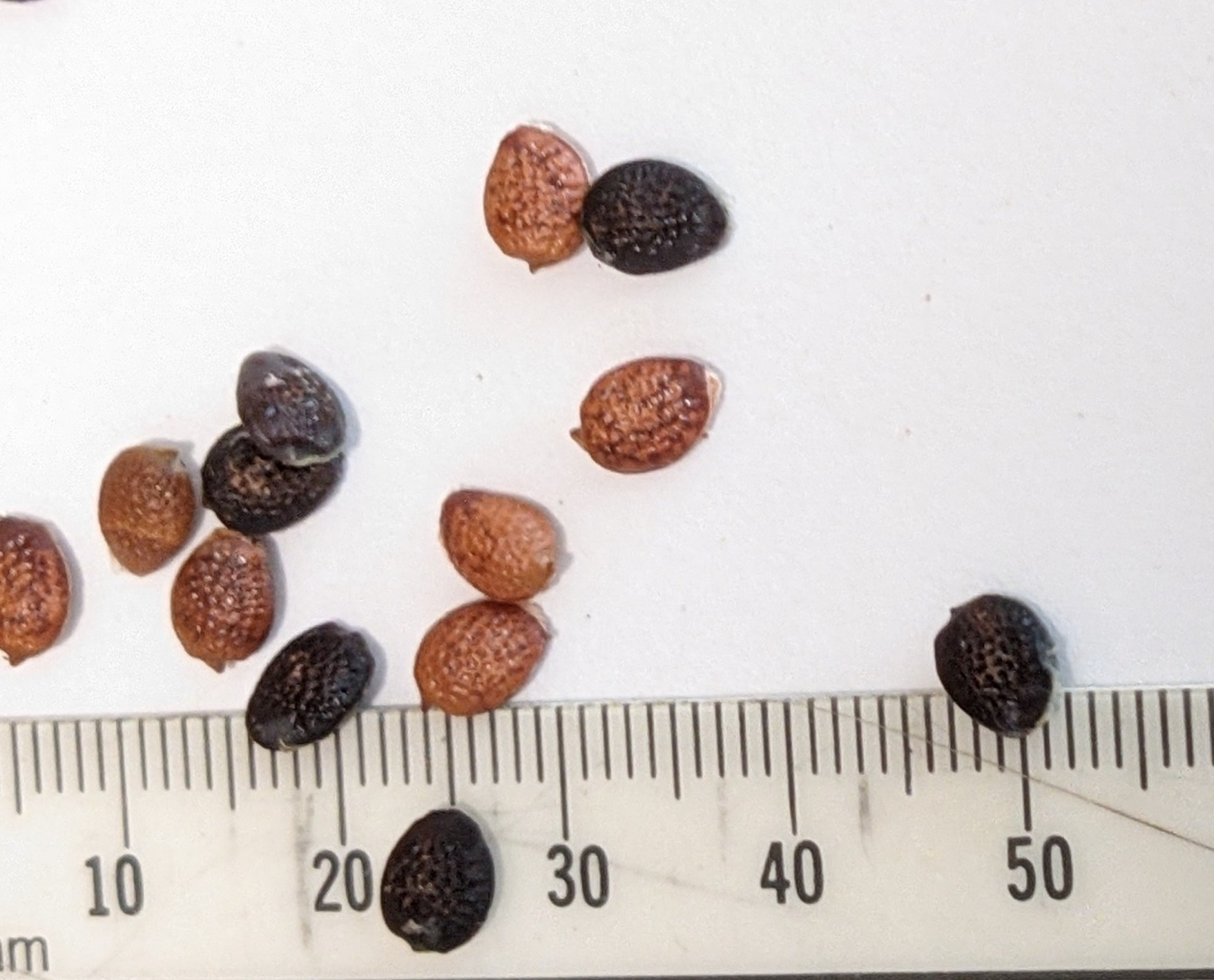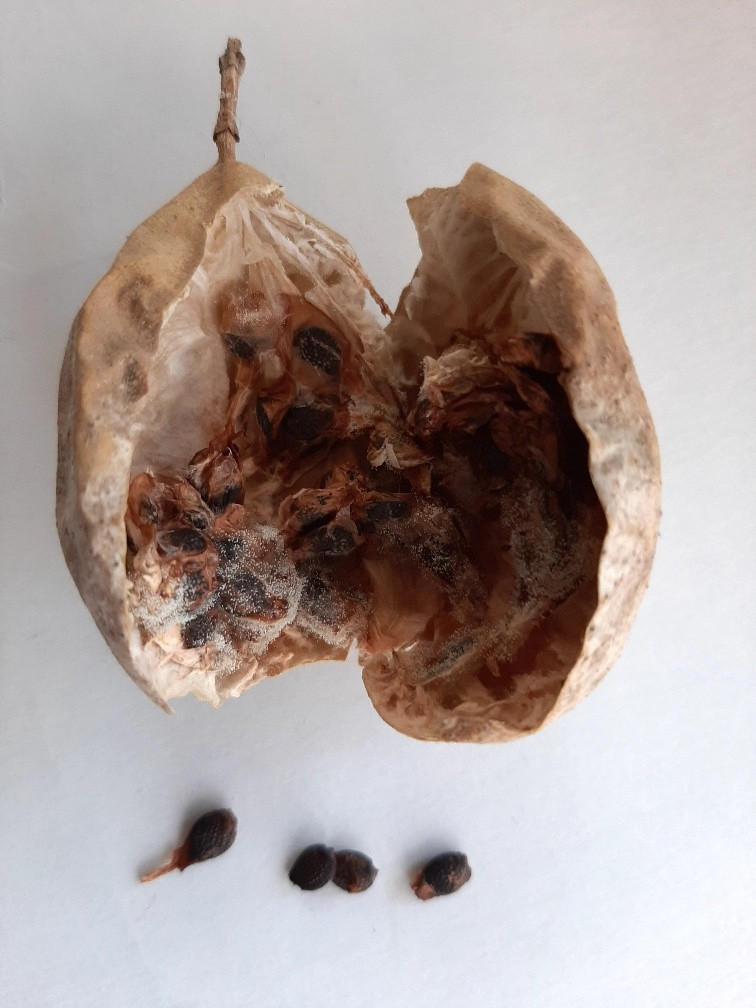NC Native Plant Society:
Plant Details
Passiflora incarnata
Purple Passionflower, Passion-vine, Maypops
Scientific Name: |
Passiflora incarnata |
|---|---|
Genus: |
Passiflora |
Species Epithet: |
incarnata |
Common Name: |
Purple Passionflower, Passion-vine, Maypops |
Plant Type |
Herbaceous_Vine |
Life Cycle |
Perennial |
Plant Family |
Passifloraceae (Passionflower Family) |
Native/Alien: |
NC Native |
Invasive Status: |
(*Key) |
Size: |
0-1 ft., 1-3 ft., 3-6 ft., 6-12 ft. |
Bloom Color(s): |
White, Purple, Violet |
Light: |
Sun - 6 or more hours of sun per day |
Soil Moisture: |
Dry, Moist |
Bloom Time: |
May, June, July |
Growing Area: |
Mountains, Piedmont, Sandhills, Coastal Plain |
Habitat Description: |
Roadsides, fencerows, thickets, fields. Common over most of NC, but uncommon in the northern mountains and far eastern counties, such as along the Outer Banks. |
Leaf Arrangement: |
Alternate |
Leaf Retention: |
Deciduous |
Leaf Type: |
Leaves veined, not needle-like or scale-like |
Leaf Form: |
Compound |
Life Cycle: |
Perennial |
Wildlife Value: |
Highest Wildlife Value |
Landscape Value: |
Highly Recommended and Available |
State Rank: |
S5: Secure (*Key) |
Global Rank: |
G5 - Secure (*Key) |
|
Unique flower of Purple Passionflower in August with numerous thread-like structures of the corona (a structure between the corolla and the stamens simulating an additional part of the perianth) Orange County, NC
Bettina Darveaux |
|
|
Flower and flower bud. Orange County, NC
Bettina Darveaux |
|
|
Developing fruit (a very large berry) Orange County, NC
Bettina Darveaux |
|
|
Dried berries in winter. A miracle that the deer or other animals didn't get to these! Orange County, NC
Bettina Darveaux |
|
|
Fleshy, leathery egg-shaped, fruits (berries) are edible and mature to a yellowish color with brown seeds in the fall. They "pop" when crushed. Randolph Co., NC- cultivated
Judy West |
|
|
Cleaned seeds with arils removed. Randolph Co., NC- cultivated
Judy West |
|
|
A dried berry opened revealing the seeds. Mecklenburg County, NC
Theresa Morr |
|
Links: |
|
back to top
go to plant details search
go to plant images search
go to gallery home
back to Initial p Gallery
back to orchids
back to Carnivorous Plants
back to Trilliums

